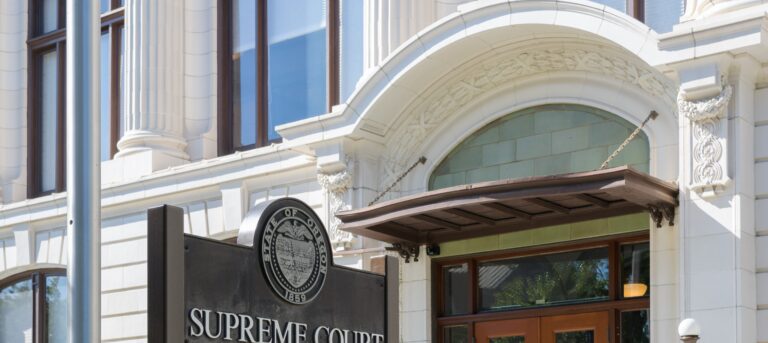Have You or A Loved One Been Exposed to Damages Inconsistent with the Pleading?
From the Desk of Melanie Rose:
This product liability case addressed the burden of proof imposed on plaintiffs’ as well as defendants’ responsibility to catch and clarify inconsistencies within the pleadings. In examining this asbestos case, the Oregon Court of Appeals lowered the bar for the plaintiff to prove “exposure” to asbestos while increasing the responsibility on the defendant to mitigate excess damage exposure by catching and bringing errors in the pleadings to the Court’s attention.
Claims Pointer:
The Court of Appeals held that a plaintiff does not need to produce evidence that shows the plaintiff was exposed to the asbestos-containing product at a particular time and location. Rather, a plaintiff only needs to provide evidence sufficient for a jury to believe exposure occurred. Further, the Court found that a jury can award damages based on the largest numbers that appear in the Complaint—even if the damages alleged in the body of the Complaint do not total the prayed for amount. The Court placed responsibility on defendants to clarify typos or inconsistencies in a plaintiff’s pleading to mitigate any increased damage exposure that may result.
Hoff v. Certainteed Corp., 316 Or App 129 (2021).
Facts:
David Hoff (“Hoff”), now deceased, and his wife Patricia (collectively “plaintiffs”) brought this product liability and negligence action arising from Hoff’s alleged exposure to asbestos resulting in mesothelioma. They alleged that Hoff contracted the disease from being exposed to a drywall joint compound that was manufactured and sold by defendant, Kaiser Gypsum Company (“defendant”). Plaintiffs’ witnesses testified that the sanding process of the drywall joints is an extremely dusty job and that Hoff had worked on job sites while drywall was being sanded. Plaintiffs’ complaint included a loss-of-consortium claim on behalf of Patricia and alleged damages of $1,000,000 for that claim. At the end of the Complaint, Plaintiffs indicated they prayed for $2,000,000 for the loss-of-consortium claim.
After all the evidence was given, defendant moved for a directed verdict stating that plaintiffs had failed to provide evidence that Hoff had been exposed to its asbestos-containing joint compound at the sites where he had worked. Defendant believed that without speculation, a jury could not conclude that Hoff had been exposed to its product. The trial court denied this motion.
After trial both parties filed post-trial motions. Defendant specifically requested the reduction of the non-economic damages for the wife to $1,000,000—the amount alleged in the body of the plaintiffs’ complaint. The trial court denied defendant’s motion and entered a verdict of $1,400,000 on the loss of consortium claim in favor of Plaintiffs.
Law:
ORCP 67 C states, “Every judgment shall grant the relief to which the party in whose favor it is rendered is entitled. A judgement for relief different in kind from or exceeding the amount prayed for in the pleadings may not be rendered unless reasonable notice and opportunity to be heard are given to any party against whom judgement is to be entered.” Defendant argued that because plaintiffs only ever “alleged” $1,000,000 in damages, they could not then pray for twice that amount.
Analysis:
Regarding the appeal of the directed verdict, the Court of Appeals rejected defendant’s contention that plaintiffs were required to provide evidence of exposure at a particular location, and that plaintiffs did not prove that its asbestos-containing product was used when Hoff was present. The Court stated that plaintiffs only had to prove that it was more likely than not that Hoff had been exposed to defendant’s asbestos-containing product at a work site. Considering the evidence plaintiffs presented that showed Hoff was present at job sites where drywall was being done and defendant’s product was used by drywallers on these job sites, the Court concluded that the evidence was sufficient for a jury to infer that Hoff would have been exposed to defendant’s asbestos-containing product. Hoff was not required to show proof of actual exposure, only the likelihood of exposure, to sustain his claim.
The court then addressed defendant’s argument that the trial court erred in entering a judgment against it for more than $1,000,000 on the loss of consortium claim. Defendant argued that the trial court awarded noneconomic damages in excess of the damages stated in the body of the complaint. First, the Court noted that defendant’s objections to the larger award were not timely, and therefore defendants only had limited grounds on which to base its appeal. These timing problems on the part of defendant resulted in a limited ability to object to the entry of judgment only. The court did not provide an analysis on whether defendant’s outcome would have been different with more timely objections.
The Court then evaluated whether entry of the judgment was consistent with ORCP 67 C. In finding that plaintiffs’ claims were not capped by the $1,000,000 allegation in the body of the Complaint, the Court relied on the fact that defendant had opportunities to clarify the inconsistent damage figures, most obviously, through filing a motion to make the Complaint allegations more definite and certain. The Court found that the inconsistency of the consortium damages was obvious, the prayer provided notice that the net exposure was as much as $2,000,000, and defendant had many chances to remedy/point out the inconsistency but never did. The Court concluded that the consortium award did not violate ORCP 67 C because the inclusion of the $2,000,000 amount in the prayer provided defendant notice of the potential scope of damages and defendant had ample time to seek clarification.
The Big Picture:
It is important to remember that a plaintiff does not have to prove that they were exposed to a dangerous product at a particular time or location, but rather must only provide evidence that it was more likely than not that the plaintiff was exposed. Moreover, this case makes clear that it is crucial to be on the lookout for inconsistencies within the pleadings and to clarify inconsistencies via pre-trial motion practice if necessary. When inconsistencies arise, point them out. When you are hit with a verdict that is in excess of the prayer in the pleading, object!

















